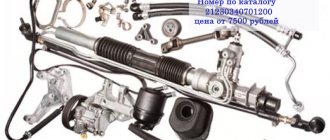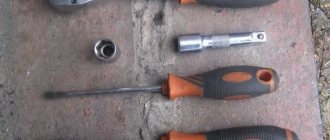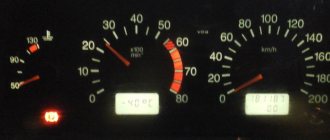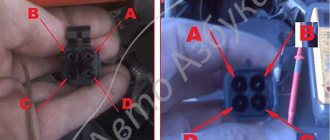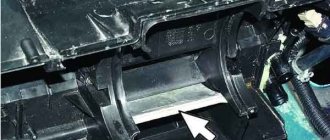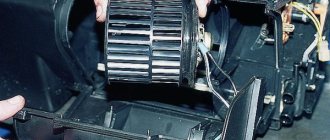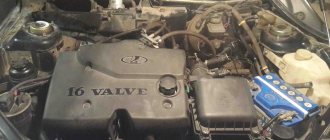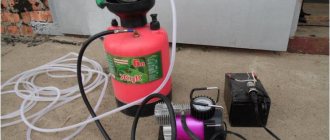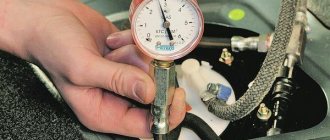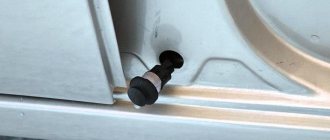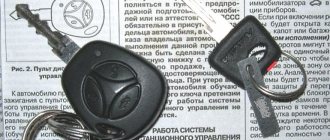“Guys, who changed the high-pressure hoses? To change the hose from the pump to the rack, you need to remove the steering rack?” This was the initial post in the process of replacing those same hoses.
In the morning I looked under the hood and saw that the SHVD that goes to the rack was sweating, and not just sweating, but covered in oil. I started looking at others, and the result was that they were all damaged. It was decided to replace it. A set of all hoses is about 1500 of ours. I took it. I started reading about the replacement, there is no real manual anywhere, only for bleeding the system, they only write that they say remove the old ones, install new ones, half an hour of work. Well, okay, I think, for a couple of hours of painstaking work. So, we pump out the old slurry with a syringe, since we will fill it in (no). It’s very strange, but when I changed the power steering pump about 3 months ago (my old one was jammed), I immediately changed the fluid, but for some reason during this period it all became the color of waste. Husim. We drop the tank, then we need to remove the generator, there’s no other way, it’s the pump underneath it, and therefore the fitting that needs to be unscrewed, but that’s okay, 10 minutes of work. Then everything rests on the rail, I moved my fingers along the path of the tube, no one understands what is there and how. I started looking on the Internet, there was nothing, whether it needs to be removed or not, but if you take it off, you can’t do it in 1.5 hours. Thanks for your help in the comments, the one who really needs to remove it is the one who has the new hoses. From the old to the easy this whole replacement. But I didn’t remove the rack completely, I disconnected it from the steering column, unscrewed the rods and 2 clamps, pulled it out of the boot and simply (not very easy, I’ve never sworn so much in my life) rotated it under the hood so that I could unscrew this evil fitting.
I unscrewed the left rack clamp without any problems, it is attached with 2 nuts, just like the right one, and I unscrewed the nut of the right clamp along with a piece of bolt. The bolts there are welded in from the factory (like studs, only welded). It’s not so bad that the second bolt of the same right clamp was torn off before me. As a result, we were left without the right fastening. Let's knock out the remains of the top bolt with a chisel (it worked, I picked up a new bolt, somehow drove it through this hole, unfortunately there is no photo), everything is fine with the top one. A piece of the lower one had to be drilled out and, by analogy with the first one, a new bolt (somehow), a nut and order. All this took about an hour. Next came the assembly, then I had to go get new oil (550 rubles), then fill it and pump it. In the end, all this fuss took me about 6-7 hours. This was my first time filming Reika. It’s not so hot to work without a manual, everything is by touch. Thanks for your comments.
Draining oil from power steering
Using a jack, we raise the front part of the car, having previously installed stops for the rear wheels. Then open the hood and pump out the oil from the power steering reservoir. The easiest way to do this is with a bulb or syringe. For convenience, use an extension hose for the syringe. After the oil has been completely pumped out of the tank, you need to turn the steering wheel several times until it stops, alternately left and right, so that a new portion of liquid appears in the tank. We pump it out again. Again we repeat a similar procedure with rotating the steering wheel and pumping out the oil.
When the liquid is completely removed from the system, using pliers we loosen the hose clamp that goes from the passenger compartment to the tank. Remove the hose and insert it into a container to drain the liquid. Turn the steering wheel alternately left and right until it stops to drain out any remaining oil.
Old-style power steering high-pressure hoses for VAZ 2110, Priora, Kalina
Dear customers, in order to avoid errors when sending the high-pressure hydraulic booster pipeline for VAZ 2110, 2170, in the “Comment” line, indicate the old or new model, the model of your car, the year of manufacture.
Many drivers began their driving careers by driving a domestic car equipped with a steering column or steering rack. Having got behind the wheel of more modern domestic cars, drivers experience incredible relief from the ease of handling the steering wheel. The explanation for this benefit is power steering (power steering).
Hydraulic power steering (power steering) is an automotive hydraulic system, part of the steering mechanism, designed to facilitate control of the direction of movement of the vehicle while maintaining the necessary “feedback” and ensuring stability and unambiguity of the specified trajectory.
1 — Oil tank fastening tape (21100-3410105-00); 2 — Oil tank bracket (21100-3410100-00 / 21100-3410100-01); 3 — Oil tank (21230-3410010-00); 4 — Screw clamp (21080-1300080-50); 5 — Supply hose 800 (21100-3408124-00); 6 — Screw clamp (21080-1300080-60); 7 - Bracket (21100-3408159-10); 8 — Bolt M16x1.5 high pressure hose (21230-3408144-00); 9 — Washer 16 (00001-0002570-60); 10 — + Power steering oil pump assembly (21100-3407009-00 *); 11 — Bolt M6x25 (00001-0009026-21); 12 – Bracket (21100-3408159-00); 13 — Cushion bracket (21100-3408157-00); 14 - Low pressure pipe (21100-3408040-00); 15 — Washer 14 (00001-0002800-60); 16 — Bolt M14x1.5 high pressure hose (21100-3408070-00); 17 — Bolt M16x1.5 low pressure hose (21100-3408074-00); 18 — High pressure hose with tube (21100-3408018-10); 19 - High pressure pipe (21100-3408080-10); 20 — + 21100-3408026-00); 21 - Bracket 24 (00001-0045702-80); 22 — Front high-pressure hose (21100-3408100-10); 23 — Bottom bolt (21120-1001371-00 *); 24 - Middle bolt (21120-1001376-00 *).
Power steering is a modernized steering rack. The following parts were added to its simple design: Oil pump; Tank with working fluid; Spool valve; Power hydraulic cylinder; Pressure regulator; Connectors and hoses.
Depending on the year of manufacture, the “ten” can be equipped with a hydraulic booster (power steering) or an electric booster (electric power steering). These are completely different units. To understand the main differences, it is enough to study the hydraulic booster. Its main component is a pump driven by the crankshaft, it is integrated with other parts. The operating principle of the hydraulic booster is based on hydraulics.
If the car is stationary, moving straight, the pump pumps idle hydraulic oil inside the system. When the steering wheel begins to move, the torsion bar begins to twist, and the spool rotates relative to the distribution sleeve. At the same time, connecting hoses open, through which oil from the tank enters a certain chamber in the power cylinder (this depends on which direction the car maneuvers under the influence of turning the steering wheel). And from another chamber, hydraulic oil simultaneously enters the tank through open ducts. The cylinder piston moves the steering rack, while simultaneously transmitting force to the steering rods that turn the wheels.
The power steering is designed in such a way that if the power steering fails, the steering continues to work (although the steering wheel becomes heavier).
If the car maneuvers at low speed, then the efficiency of the power steering is maximum. This is achieved by increasing the number of revolutions of the pump motor. An increase in its performance contributes to an intensive flow of hydraulic fluid into the cylinder and the force applied to turning the steering wheel decreases significantly. Increasing the speed of the machine reduces the rotation speed of the electric motor, and the solenoid valve comes into action, which reduces the flow of the hydraulic system channels, and more effort has to be applied to turn the steering wheel.
The electric power steering (EPS) is driven by an electric motor; its design includes an electronic control unit, a steering shaft with a torsion element and sensors.
The electric booster has its drawbacks. Its design is more complex than that of “hydraulics”, hence the high price. Sometimes the electronic control unit sends incorrect commands, this was especially felt by the owners of the first generation Kalina. If you drive for a long time on a poor-quality road surface (or lack thereof), the EUR may turn off for several minutes due to overheating.
High pressure hoses come in the old type 2110-3408100 / 2110-3408018-10 and the new type 2110-3408018-20/2110-3408100-20. The old ones differ in that their rubber hose can be directly disconnected from the steel tube, which is screwed with a hollow bolt onto the spool mechanism of the rack. This is more convenient because it allows you to replace a leaking hose without removing the rack.
New sample 2110-3408018-20/2110-3408100-20 one-piece hose. Replacement requires dismantling the rack.
To ensure normal operation of the hydraulic power steering, it is necessary to regularly monitor the level of working fluid in the power steering reservoir. When the hydraulic pump is cold and the engine is not running, the fluid level should be between the two marks of the reservoir indicator. A drop in the liquid level indicates depressurization of the system and requires mandatory inspection and elimination of leaks in places of loose connections, which must be performed at the manufacturer's PSSS, which perform warranty repairs and maintenance of vehicles in the Russian Federation under an agreement with the manufacturer (Appendix No. 1 to the warranty card) .
The efficiency of the hydraulic booster is due to the fact that its power system is activated only when the steered wheels are turned at a significant angle. Reliable power steering and its systems do not require maintenance costs
Advantages of power steering:
— an ideal solution to increase safety and improve vehicle controllability;
— significantly reduces the effort on the steering wheel (especially when maneuvering in place);
— reliable, does not require significant maintenance costs;
— increases vehicle stability (especially in emergency situations);
- reduces the total number of steering wheel revolutions;
— ensures driving comfort and safety, primarily by the absence of loss of directional stability of the vehicle in the event of a sudden failure (shot) of the tire of one of the front wheels;
— in damping reverse impacts, i.e. in smoothing out steering wheel jerks when hitting an obstacle.
- reduces driver fatigue.
It is necessary to remember that your attentiveness to the technical condition of the car will help to avoid unnecessary problems with repairs. If any extraneous noise, knocking or fluid leaks occur, you must contact a service station to diagnose the problem.
Despite possible malfunctions of the power steering that arise due to natural wear and tear of parts, the advantages of a steering system with power steering are incomparably greater. Those who have ever tried to drive a car with one hand will never be able to get behind the wheel of a car that is not equipped with a steering mechanism with a built-in power steering.
Other articles of the product and its analogues in the catalogues: 21100-340801810, 21100-340808010, 21100-340810010.
VAZ 2110-2111, VAZ 2112, VAZ 2113-2115, VAZ 1117-1119, VAZ 2170 with power steering.
Any breakdown is not the end of the world, but a completely solvable problem!
How to independently install or replace high-pressure hoses of the old model VAZ 2110 on a car of the tenth VAZ family with power steering.
With the AvtoAzbuka online store, repair costs will be minimal.
Just COMPARE and BE SURE!!!
Don't forget to share the information you find with your friends and acquaintances, because they may also need it - just click one of the social networking buttons located above.
Replacing power steering hoses
Simultaneously with replacing the pump or power steering fluid, it is recommended to thoroughly check the condition of the hoses and pipes. If necessary, replace them with new ones. Hoses must be changed only after the oil has been completely pumped out.
To replace hoses or pipes, first unscrew the clamps. Installing new hoses causes some inconvenience, since the location of the hydraulic booster is not entirely convenient for performing such operations. New hoses and pipes should be securely secured with clamps. However, you should not be too zealous so as not to damage them.
Power steering for VAZ 2110: replacement, repair and much more
- 1 Replacing hoses and oil
- 2 Power steering pump 2.1 Bearing and oil seal of the pump
Power steering VAZ 2110
The power steering for the VAZ 2110 is simply a miracle part that will allow you to get the greatest driving comfort. If the modification of the VAZ 2110 has such a power steering, as this part is called briefly, then this is great. In this article we will learn how to replace a VAZ 2110 hydraulic hose or other power steering repairs.
Let's remove the power steering pump
As a rule, ZF version power steering pumps are installed in VAZ-2110 series cars. These devices are also equipped with hydraulic boosters of some models of Volkswagen, Audi A6 and so on. Pumps usually cannot be repaired and, if necessary, are replaced with new ones. However, in some cases, you can try to restore their functionality with your own hands, for example, replacing a worn bearing or cuff. It all depends on the nature of the malfunction.
Removal sequence for power steering pump:
Loosen the clamp and remove the return hose. When doing this, care must be taken not to spill the oil.
We very carefully remove the sensor from the fitting bolt, which is designed to measure fluid pressure in the power steering system.
Remove the fitting bolt and disconnect the discharge pipeline.
Remove the power steering drive belt.
After this, we proceed to dismantling the direct pump.
First, loosen one mounting bolt.
Then unscrew the second bolt and remove the complete power steering pump assembly.
We install the new pump in the reverse order.
Alternator and power steering belt
Generator on a VAZ 2110 car with power steering
What, does the owner of a VAZ 21103 have a hydraulic booster? As you know, if a VAZ 2110 is equipped with power steering, which, it is worth noting, completely eliminates vibrations typical of front-wheel drive cars, replacing the alternator belt is carried out completely differently than is customary. As a rule, the alternator belt is replaced after 45-60 thousand kilometers, and cracks on it are a direct sign of replacement. A normal replacement of this part takes no more than 10 minutes, but on cars with power steering it takes more time, and the belt cannot be found in its usual place. In this place, if power steering is installed, the pump described above is placed. The generator itself is located higher.
Pour fluid into the power steering
After replacing the power steering pump, you need to fill the system with new fluid:
First, pour oil into the tank until about.
Then we sit in the cabin and turn the steering wheel several times all the way in both directions so that the fluid fills the system.
After this, add oil to the barrel and turn the steering wheel again.
Add fluid, start the engine and turn it off after a few seconds.
Rotate the steering wheel several times until it stops in both directions.
Add oil to the tank again.
We turn the steering wheel at least 10 times all the way in each direction with the engine off to thoroughly bleed the system.
We start the engine and again turn the steering wheel in both directions 10 times.
We control the oil level in the tank and add fluid if necessary.
Power steering for VAZ 2112
In urban environments, you often have to perform numerous parking maneuvers. The fairly light steering of the VAZ 2112 in such cases becomes much heavier. It takes more effort to turn the wheels of a car that is standing still. The better their grip on the surface, the more difficult it is to maneuver. Therefore, the VAZ 2112 power steering will come in handy.
Power steering for VAZ 2110: replacement, repair and much more
- 1 Replacing hoses and oil
- 2 Power steering pump 2.1 Bearing and oil seal of the pump
Power steering VAZ 2110
The power steering for the VAZ 2110 is simply a miracle part that will allow you to get the greatest driving comfort. If the modification of the VAZ 2110 has such a power steering, as this part is called briefly, then this is great. In this article we will learn how to replace a VAZ 2110 hydraulic hose or other power steering repairs.
Detailed guide to installing electric power steering on a “Ten”
The amplifier installation procedure is as follows:
- First you need to take the purchased wires and remove the standard terminal from the connector, and then install it into the connector on the harness.
- The terminal connected to the connector is mounted where the wire was connected to the standard block. This must be done so that you have the opportunity to pass a standard cable between the bundles. It is also necessary to take into account that the wire from the blocks carries 50 amperes; accordingly, it is necessary to install the same safety element.
- The next step will be to remove the steering column trim, ignition switch, and all switches located under the steering wheel. At this stage, you need to do everything carefully, since the lining itself is fragile and can crack.
- Then the screw securing the rail is unscrewed, after which it is removed. Next, you will need to compare the length of the old and new intermediate shafts, since adjustments will need to be made to the plates and the shaft itself. The further fitting procedure is carried out by turning - it is best to perform it on a machine, this will allow you to obtain the most accurate result. We recommend that you contact specialists for this task. As for the dimensions of the plate, they are adjusted by re-drilling some holes to a greater depth. In addition, you may also need to trim the corners of the plate a little with a grinder, after which you will need to install spacers between it and the car body.
- Install the amplifier along with the rail and plate - a standard screw may not be suitable for fixing, so you will have to install a shorter bolt instead. In turn, this may lead to the need to install a limiter to prevent arbitrary rotation of the shaft.
- Next, the central part of the switches is installed.
- After this, two wires are laid from the vehicle interior to the battery; it is advisable to lay the wiring through the left fender. The expansion tank of the washer system is being dismantled. You need to find a long copper wire, with its help you will push the wiring. Then open the mounting block with the safety elements and find the wires that go into the engine compartment, you will need to push the wire through the same hole. Be careful not to damage the wiring. Once the wire comes out through the left fender, attach the amplifier wires to it and push them into the engine compartment.
- Then the control panel is dismantled, having done this, you need to find the red connector. Next, the wiring from the amplifier is pushed into the space under the shield. It is necessary to disconnect the orange cable from the red connector; a block from the set of wires for the electric power steering is installed on it. This wire should be connected to the orange wiring of the installed system, and the remaining end with the terminal is mounted instead of the standard cable in the connector.
- Similar actions are carried out with the gray wire; it is also installed in the red connector. The cables routed into the engine compartment must be connected as follows: the black wire is connected to the negative, the pink wire to the positive. Actually, at this point the installation procedure can be considered complete. Now you only need to reinstall the cover and steering wheel.
The installation of the power steering system must be carried out by car service specialists, and the owner is given a special document. The certificate of completed work is submitted to the registration and examination department of the traffic police, and on its basis changes are made to the PTS. During installation, you must strictly follow the instructions supplied with the equipment.
Step-by-step work on installing power steering on a VAZ-2107:
- the car is driven onto a viewing hole or a lift, the front part is suspended, the wheels are dismantled;
- using special equipment, the rod ends are disconnected from the steering wheel bipod;
- inside the car, the spline joint is unscrewed and the shaft on which the steering wheel is mounted is removed;
- the bolts securing the machine to the spar are released and the mechanism is removed;
- a new gearbox with an actuating hydraulic cylinder is attached to the vacant space;
- A pump is installed on the engine cylinder block to provide the required oil pressure in the structure. The drive belt is thrown over the crankshaft pulley and tensioned as indicated in the instructions;
- at the next stage, installation of high-pressure hoses and pipelines is carried out, their connection to the actuator and compressor;
- operating fluid (1.8 liters) is poured into the system, and the equipment is checked for tightness of connections
At the end of the process, the hydraulic housing must be pumped to remove any remaining air from it. To do this, you need to turn the steering wheel several times until it stops in both directions. After these steps, a trial first start of the engine is carried out and the system is checked for operability. The steering force should begin to decrease sharply almost immediately after starting.
For further operation of the VAZ-2107 model, wheel alignment angles are checked on a special stand. If necessary, camber and toe are adjusted and brought to the characteristics established by the technical passport. It should be remembered that power steering makes it possible to maneuver at low speeds and turn the steering wheel even in place without much effort.
Operating principle of EUR and power steering
Power steering VAZ 2110 is a system consisting of many elements. The power steering pump in this case is driven by the crankshaft - it pumps oil, as a result of which, through pressure, it allows rotation of the steering wheel.
The electric power steering is a modular design that is built into the steering column; the module itself consists of:
- synchronous type electric motor;
- torsion bar;
- several sensors;
- control module.
EUR device for a VAZ car
The principle of operation is as follows - the torsion bar is twisted, the sensor reads the torque, and the electric motor transmits a small force to the output shaft.
